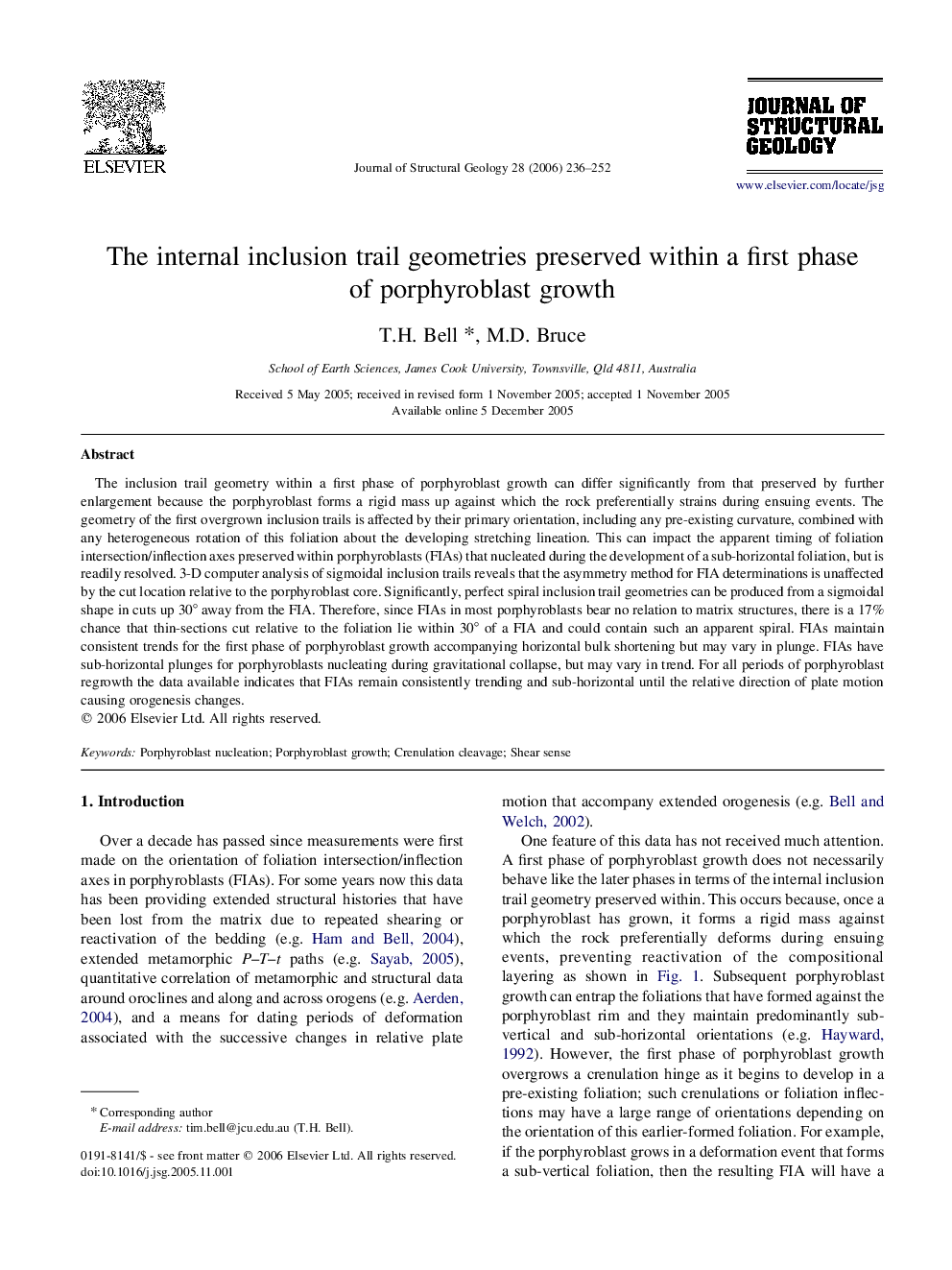| Article ID | Journal | Published Year | Pages | File Type |
|---|---|---|---|---|
| 4734286 | Journal of Structural Geology | 2006 | 17 Pages |
The inclusion trail geometry within a first phase of porphyroblast growth can differ significantly from that preserved by further enlargement because the porphyroblast forms a rigid mass up against which the rock preferentially strains during ensuing events. The geometry of the first overgrown inclusion trails is affected by their primary orientation, including any pre-existing curvature, combined with any heterogeneous rotation of this foliation about the developing stretching lineation. This can impact the apparent timing of foliation intersection/inflection axes preserved within porphyroblasts (FIAs) that nucleated during the development of a sub-horizontal foliation, but is readily resolved. 3-D computer analysis of sigmoidal inclusion trails reveals that the asymmetry method for FIA determinations is unaffected by the cut location relative to the porphyroblast core. Significantly, perfect spiral inclusion trail geometries can be produced from a sigmoidal shape in cuts up 30° away from the FIA. Therefore, since FIAs in most porphyroblasts bear no relation to matrix structures, there is a 17% chance that thin-sections cut relative to the foliation lie within 30° of a FIA and could contain such an apparent spiral. FIAs maintain consistent trends for the first phase of porphyroblast growth accompanying horizontal bulk shortening but may vary in plunge. FIAs have sub-horizontal plunges for porphyroblasts nucleating during gravitational collapse, but may vary in trend. For all periods of porphyroblast regrowth the data available indicates that FIAs remain consistently trending and sub-horizontal until the relative direction of plate motion causing orogenesis changes.
